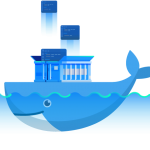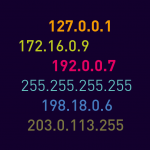un dato es una representación simbólica de un atributo o variable cuantitativa o cualitativa.
Simbólica: puede ser númerica, algorítmica, alfabética, espacial, entre otros.
Cuantitativa: datos que siempre están referidos a los números.
Cualitativa: son aquellos que responden a la pregunta, cual o cuales. Aquí puede existir datos como el color, sentimientos, etcétera.
Los datos son información, por lo que describen hechos empíricos, sucesos y entidades.
Para poder analizar los datos primero hay que organizarlos o tabularlos. El procesamiento de los datos es lo que nos va a proporcionar la información respectiva, cuando hablamos de un conjunto de datos.

Base de datos: o banco de datos es un conjunto de información que pertenece a un mismo contexto. Conjunto de datos que está estructurado y almacenado de forma sistemática.
Tabla: tipo de modelado de datos donde se guardan los datos que son recogidos por un programa. Podríamos decir que una tabla es similar a una hoja de cálculo, en cuanto a que los datos se almacenan en filas y columnas.
Las tablas se componen en dos estructuras:
1. El campo que hace referencia al nombre que va a tener la columna, el cual debe ser único y tener un tipo de dato asociado.
2. Los registros que corresponden a cada fila que compone la tabla y ahí se componen los datos y los registros.
¿Porqué es importante usar una base de datos?
1. Mayor independencia.
2. Mayor disponibilidad.
3. Mayor seguridad.
4. Menor redundancia: un solo dato puede ser utilizado por varios ficheros y evitar su replicación.
5. Mayor eficiencia en la captura, codificación y entrada de datos.
6. Mayor coherencia.
7. Mayor eficiencia.
8. Mayor valor informativo.
Modelo de datos: muestra la estructura lógica de la base de datos, incluidas las relaciones y limitaciones que determinan cómo se almacenan los datos y cómo se accede a ellos, es decir, es una colección de herramientas conceptuales, para describir los datos, sus relaciones, su semántica y restricciones de consistencia. Los modelos de datos ofrecen un modo de describir el diseña de la base de datos en los niveles, físico, lógico y el nivel de vistas.
Los modelos de datos se pueden clasificar en:
1. Modelo entidad-relación o modelo E-R el cual se basa en una percepción del mundo real que consiste en una colección de objetos básicos denominados entidades y de la relación que existe entre ellos.
* Una entidad, es una cosa, un objeto del mundo real que es distinguido entre otros objetos.
2. Modelo relacional que es una colección de tablas para representar tanto los datos como sus relaciones, siendo el modelo más ampliamente usado.
3. Modelo de datos Orientado a Objetos el cual se puede considerar como una extensión del modelo entidad relación con los conceptos de la encapsulación, los métodos o funciones y la entidad de los objetos.
4. Modelo de datos semiestructurados el cual permite la especificación de datos donde los elementos de datos individuales del mismo tipo, pueden tener diferentes conjuntos de atributos.
5. Modelo de datos de red.
6. Modelo de datos jerárquico.
Usos de los Diagramas Entidad-Relación:
1. Diseño de base de datos.
2. Solución de problemas de bases de datos.
3. Sistemas de información empresarial.
4. Reingeniería de procesos de negocio (BPR)
5. Educación.
6. Investigación.
Nociones Básicas Modelo Entidad Relación:
1. Conjunto de Entidades.
2. Conjunto de relaciones.
3. Conjunto de atributos.
Conjunto de entidades: que comparten las mismas propiedades o atributos. Por lo general representamos las entidades en un rectángulo. Una entidad tiene un conjunto de propiedades.
Conjunto de relaciones: una relación es una asociación entre dos o varias entidades, se representa por un rombo.
Conjunto de atributos: los atributos se representan por elipses los cuales describen propiedades que posee cada miembro de un conjunto de entidades. Dentro de cada entidad debe existir un atributo que sirve como identificador.
Sistema Gestos de Base de datos por sus siglas SGBD o DBMS (Database Management System) es una colección de programas cuyo objetivo es servir de interfaz entre la base de datos, el usuario y las aplicaciones. Otra forma de explicarlo, es que el DBMS nos va a servir de cliente frente a la administración de la base de datos para su comunicación con el servidor.
Características del DBMS:
1. Abstracción de la información.
2. Independencia.
3. Redundancia mínima.
4. Consistencia: vigilar que la información que presente redundancia se actualice de forma coherente.
5. Seguridad.
6. Integridad.
7. Respaldo y recuperación.
8. Control de la concurrencia: acceso de manera simultánea al gestor de base de datos.
SQL hace uso del algebra y cálculo relacional fundamental para recuperar información de nuestra base de datos.
DISTINCT: sirve para evitar traer registros duplicados frente a cierto campo, por ejemplo:
SELECT DISTINCT nombres FROM profesores;
Note: Not all database systems support the SELECT TOP clause. MySQL supports the LIMIT clause to select a limited number of records, while Oracle uses FETCH FIRST n ROWS ONLY and ROWNUM.




 Ephemeral code
Ephemeral code